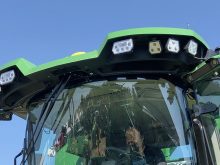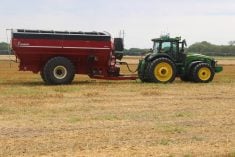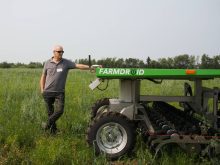A lot of other fully autonomous equipment will hit the field before automated harvesters do, says expert
Not long ago, a piece of farm equipment trundling through a field without need for a driver was front-page news.
Today, autonomous technology still draws the crowds during farm show demonstrations and has been cropping up more and more — everywhere except on farms.
John Deere’s website displays the promise of a fully autonomous tillage-tractor combo. Agco expects to commercially release a retrofit kit for autonomous grain cart operation next year.
Read Also
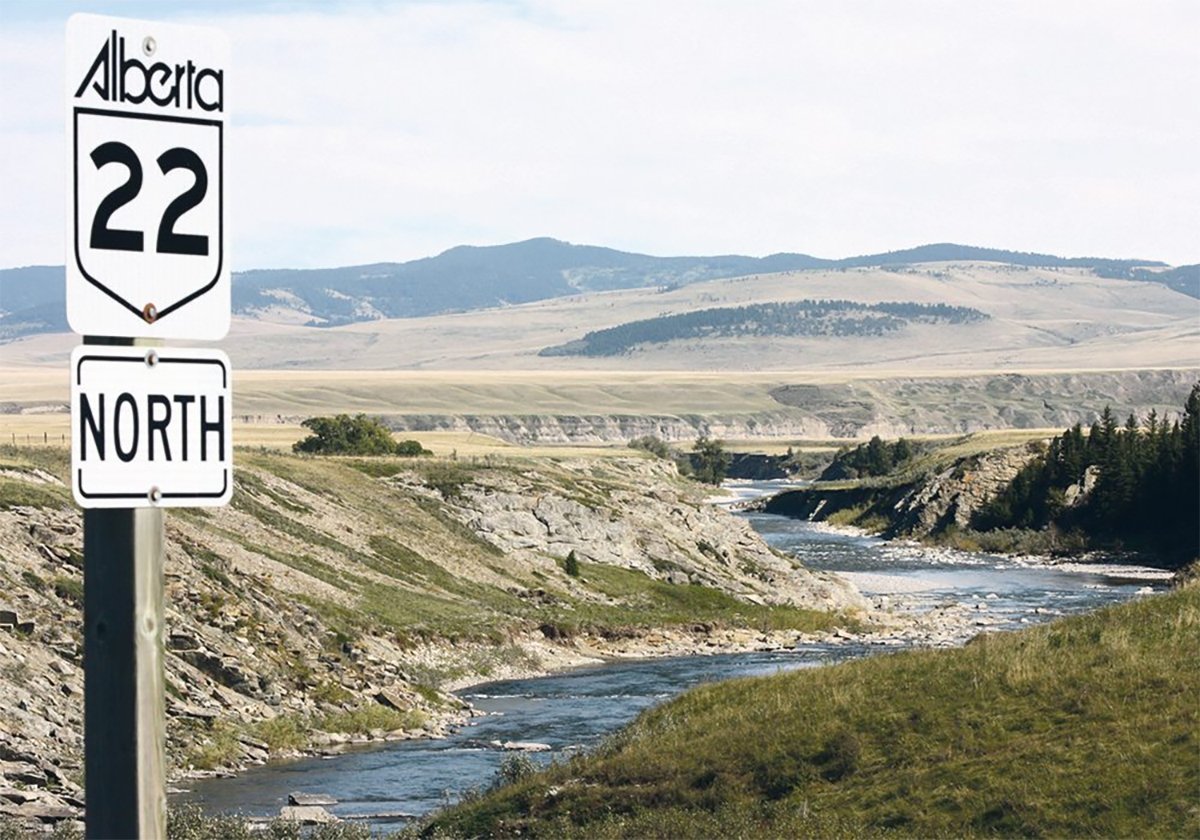
New coal mine proposal met with old concerns
A smaller version of the previously rejected Grassy Mountain coal mine project in Crowsnest Pass is back on the table, and the Livingstone Landowners Group continues to voice concerns about the environmental risks.
How long before those technologies are joined by an autonomous combine? According to Kim Rominger, chief executive officer of the North American Equipment Dealers Association, it may be sooner than many think.
“They’re still in the stage of development. I don’t know of any out in the marketplace at this point in time, other than maybe as a prototype. But yeah, they’re being developed and they’re getting very, very close.”
Chris Morson, Canadian precision sales manager for CNH, also believes a commercial full-auto combine isn’t far off, but a range of other fully autonomous ag equipment will likely reach markets first. CNH is developing and testing its own driverless offerings with customers.
“It’ll depend on a play between customer demand and allocation of engineering time,” Morson said. “I most certainly will see it in my career, I believe, and I’m probably in the last third of (my career).”
As a broad guess, Morson expects a driverless combine to reach the market in four to five years.
“I don’t know if it’ll be that fast, but there will be a pile of innovation and improvements and automation of the equipment between now and when you truly don’t need anyone in the field, especially depending on the part of the world (you’re in),” he said.
CNH is the parent company of Case IH, New Holland and Raven Industries, leaders in autonomous ag equipment. Raven’s Cart Automation system, set up with New Holland and Case IH equipment to synchronize tractor-pulled grain carts with combines, became commercially available this year.
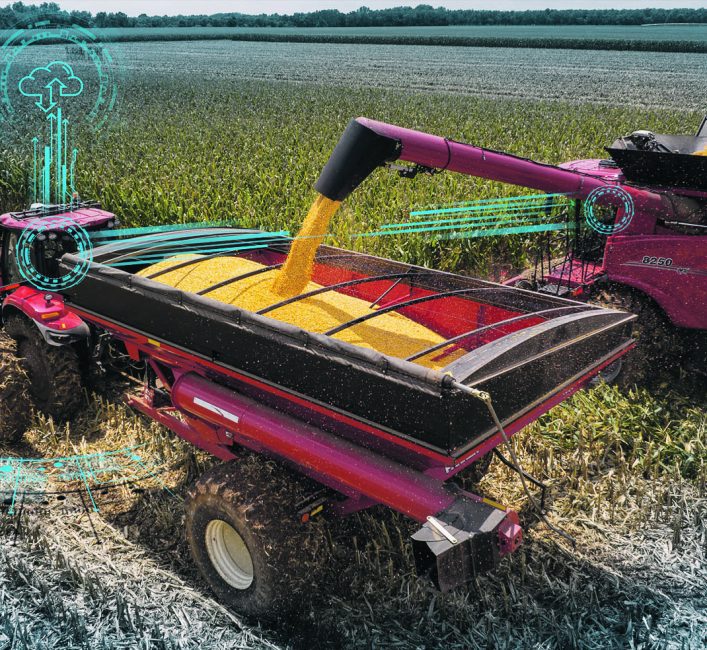
A New Holland representative told Glacier FarmMedia that the system is meant to reduce driver error and spillage between the combine and grain cart. There are still people in all the cabs.
Raven went through a number of buyouts and focus changes before entering the autonomous space with its purchase of Norbert Beaujot’s DOT, an autonomous power unit that pairs with a range of implements. It served as many Prairie farmers’ first exposure to full-auto farm technology.
Morson worked on DOT in its startup days and since its acquisition by Raven. Although Raven has since shelved DOT, he said the fundamental technology still plays a role in the company’s autonomous technology.
It’s anyone’s guess what the first successful driverless combine will look like. It could be an aftermarket module or kit.
That would echo the way technologies like GPS guidance in tractors gained ground. Companies such as Agco have suggested that retrofits may be the initial first steps for autonomous technology on farms in general.
Aftermarket autonomy would be complex in the context of a combine, but could be doable, said Morson. Any such kit would need to communicate with all functions of the machine, including steering, propulsion, threshing, spreading and more. It may also require “huge changes” and updates to combine systems.
Modules can make sales and trades easier, said Morson. By comparison, DOT’s all-in-one design and uncertain resale value may have been its downfall.
“If you bought a DOT, you had no idea what that was going to be worth in five years or whenever you were done with it and ready to trade.
“Whereas if it was a kit that went onto, say, a Quadtrac (tractor), possibly there would be a buyer for that Quadtrac with that autonomous kit on it, but 100 per cent I could take that kit off … and I could keep it or sell it separately.”
Brand loyalty and farmer buying preferences are other arguments for a retrofit or kit approach.
“A customer purchases a new Quadtrac with GPS from the factory. When he trades that Quadtrac in, the next buyer might have another brand of GPS or precision equipment on their farm,” Morson noted.
“They would most likely take the GPS off, that was on that machine, and put the other brand’s GPS and computers in it so that it matched the rest of their fleet.”
Whatever full-auto farm equipment makes it to market first, it won’t be a combine, Morson said.
Grain cars are already available and a tillage product may also make business sense as a more common practice in most parts of the world. By that rationale, the potential for seeders is limited because planters are more common in many parts of the world.
“(That’s) the reason Raven Cart Automation is the first semi-autonomous product to come out (from CNH),” Morson noted. “It doesn’t matter what you grow or where you grow it, at some point you have to harvest it. So working on that product line expands us out to a customer base all across the globe.”
Western Canada has been a hub for autonomous development, but Morson can see first adoption potential in U.S. row crops as well as vineyards and orchards all over the world.
“Western Canada is extremely challenging for autonomy because our fields almost always change. I’m in southeast Saskatchewan. It’s very easy to remember years where most of the quarters around here were 160 acres broke and then we could go into a wet cycle and those same fields could go down to 100 acres or even 80 acres.
“Every time something like that happens, you have to reteach an autonomous robot where it’s allowed to go and not allowed to go for sloughs or wet spots, or if there’s a new rock pile or anything like that.”
That doesn’t mean the Prairies are out of the running in the world of fully autonomous ag.
“But we need to develop those perception systems where it can look ahead and identify ‘is that a rock pile? Is that a slough? Is that just the sun reflecting off some standing water? Is that water deeper?’” he said.






